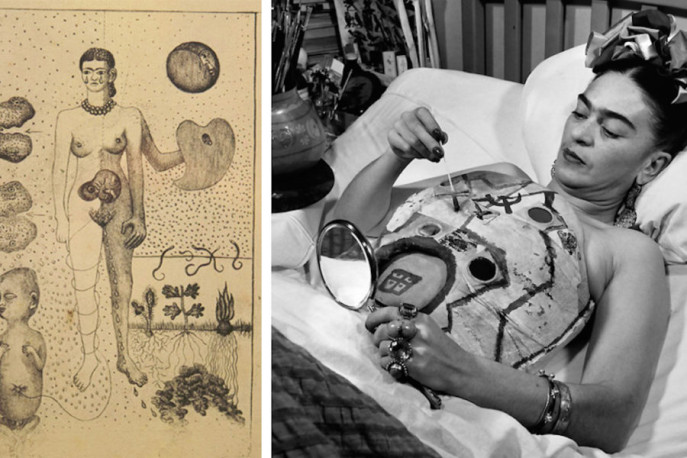
by: Ellen C. Caldwell
for Riot Material
At the start of the month, the Brooklyn Museum opened the exhibit Frida Kahlo: Appearances Can Be Deceiving. It is a massive show, packed with rooms of ephemera, clothing, artifacts, and of course art, based upon both last year’s Frida Kahlo: Making Herself Up at the Victoria and Albert Museum and the original exhibit curated by Circe Henestrosa at the Frida Kahlo Museum in 2012.
Aptly titled, the exhibit is deceiving in its appearance and scope. All three of the past exhibits advertise that they showcase Kahlo’s famed clothing and personal possessions that had been locked away behind closed doors for fifty years, following her death in 1954 until 2004. All boast of being firsts as well: the first exhibit to showcase the clothing (Frida Kahlo Museum), the first exhibit outside of Mexico to do so (Victoria and Albert), or the first to do so in the U.S. (Brooklyn Museum). However, this show is about so much more than Kahlo’s clothing or appearance…
It is about the experience…
Viewers to the museum are met with large bright pink LED screens with blue block letters yelling out “FRIDA KAHLO.” Here, the museum plays upon a growing need for viewer-digital interaction by offering a picture-perfect space for visitors to pose and take photos, excitedly waiting to enter the exhibit — and they do. Although guests are not allowed to take photos inside the exhibit (though Instagram confirms my observation that this rule appeared to be largely unenforced on my visit), the last room provides another photo opportunity for viewers with a larger than life image of Kahlo to bookend the entry and exit experience. This is particularly fitting, given that the museum is consciously exploring a self-reflective artist who, as Rebecca Kleinmann aptly points out, “meticulously crafted her own image on a par with Cleopatra” and even posthumously has approximately 830,000 Instagram followers today…
